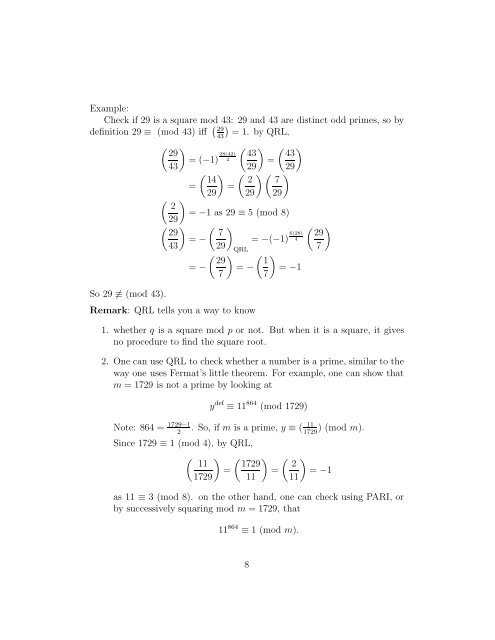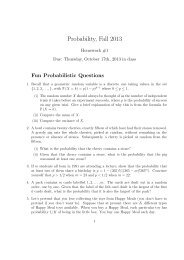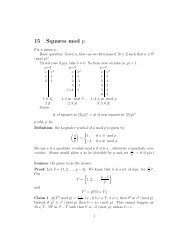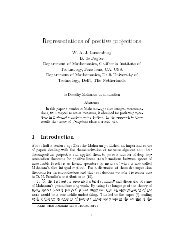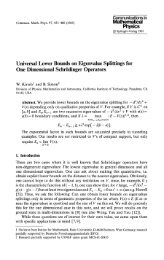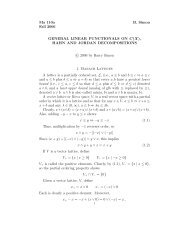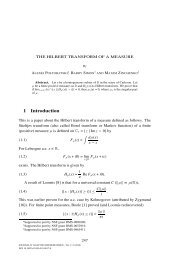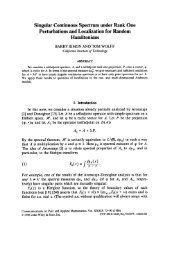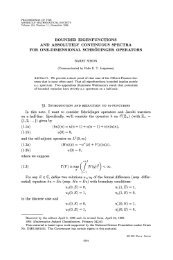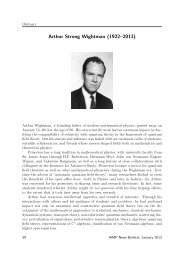16 The Quadratic Reciprocity Law - Caltech Mathematics Department
16 The Quadratic Reciprocity Law - Caltech Mathematics Department
16 The Quadratic Reciprocity Law - Caltech Mathematics Department
You also want an ePaper? Increase the reach of your titles
YUMPU automatically turns print PDFs into web optimized ePapers that Google loves.
Example:<br />
Check if 29 is a square mod 43:<br />
<br />
29 and 43 are distinct odd primes, so by<br />
=1. byQRL,<br />
definition 29 ≡ (mod 43) iff 29<br />
43<br />
<br />
29<br />
=(−1)<br />
43<br />
28(42)<br />
<br />
43 43<br />
4 =<br />
29 29<br />
<br />
14 2 7<br />
= =<br />
29 29 29<br />
<br />
2<br />
= −1 as29≡5(mod8) 29<br />
<br />
29 7<br />
= − = −(−1)<br />
43 29 QRL<br />
6(28)<br />
<br />
29<br />
4<br />
7<br />
<br />
29 1<br />
= − = − = −1<br />
7 7<br />
So 29 ≡ (mod 43).<br />
Remark: QRL tells you a way to know<br />
1. whether q is a square mod p or not. But when it is a square, it gives<br />
no procedure to find the square root.<br />
2. One can use QRL to check whether a number is a prime, similar to the<br />
way one uses Fermat’s little theorem. For example, one can show that<br />
m = 1729 is not a prime by looking at<br />
y def ≡ 11 864 (mod 1729)<br />
Note: 864 = 1729−1<br />
.So,ifmis a prime, y ≡ ( 2<br />
11<br />
1729 )(modm).<br />
Since 1729 ≡ 1(mod4),byQRL,<br />
<br />
11 1729<br />
= =<br />
1729 11<br />
<br />
2<br />
= −1<br />
11<br />
as 11 ≡ 3 (mod 8). on the other hand, one can check using PARI, or<br />
by successively squaring mod m = 1729, that<br />
11 864 ≡ 1(modm).<br />
8


